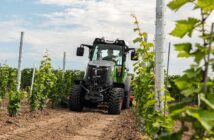Escalating demand for food from a burgeoning world population is accelerating the development of the pesticides market in North America and Western Europe. The shift to newer, more expensive chemistries that offer better solutions for pest-resistance further spurs market revenues.
New analysis from Frost & Sullivan, Analysis of Pesticides Market in North America and Western Europe, finds that the market earned revenues of $24.75 billion in 2014 and estimates this to reach $28.76 billion in 2018. The study covers crop protection chemicals (including herbicides, insecticides and fungicides) and biopesticides.
“With many top market participants aggressively investing in R&D, newer active ingredients with better performance and broader applications are continuously being pumped into the pesticide market in North America and Western Europe, raising average prices and profits,” said Frost & Sullivan Chemicals and Materials Senior Research Analyst Aparna Balasubramanian. “Greater environmental awareness and the need to circumvent issues with pesticide resistance are particularly quickening the development of biopesticides.”
The impact of fungal pest control on the quality and yield of produce is accelerating the adoption of fungicides. However, the continuing use of these chemical pesticides raises environmental and health concerns. Regulatory authorities are increasingly scrutinizing pesticides for toxicity to the environment, carcinogenic activity, and harmful effects on other biological species such as insects and aquatic organisms.
Moreover, consumers are becoming conscious about pesticide residues on food products, especially in fresh vegetables and fruits. As supermarkets push for residue-free fruits and vegetables, farmers are forced to minimize pesticide use on plants, thereby restraining volume growth.
“Strong marketing initiatives to promote awareness on the benefits of biological pest control – safety, low toxicity and better resistance management – will help manufacturers tap into the immense potential this new branch offers,” recommended Balasubramanian. “With different formulations required in countries with differing climatic conditions, offering technical assistance for the mixing and application of products will also enable pesticide suppliers to appeal to a wider consumer base in North America and Western Europe.”
For complimentary access to more information on this research, please visit: http://bit.ly/NE8D-39.



